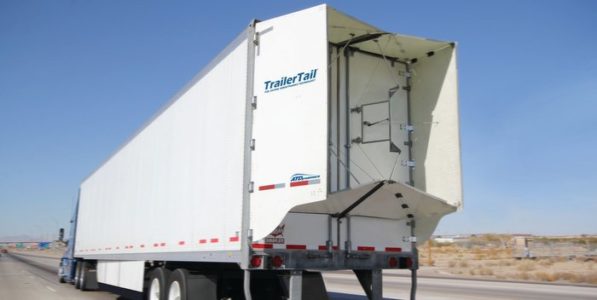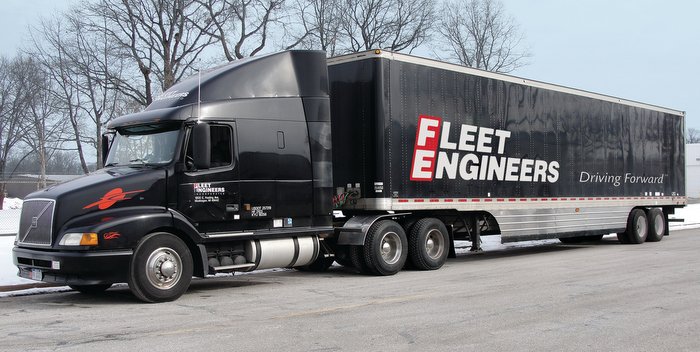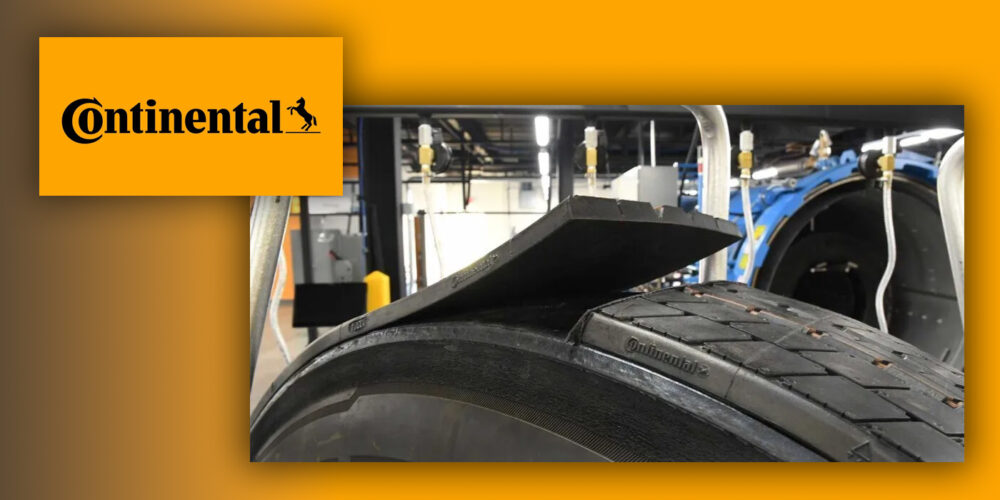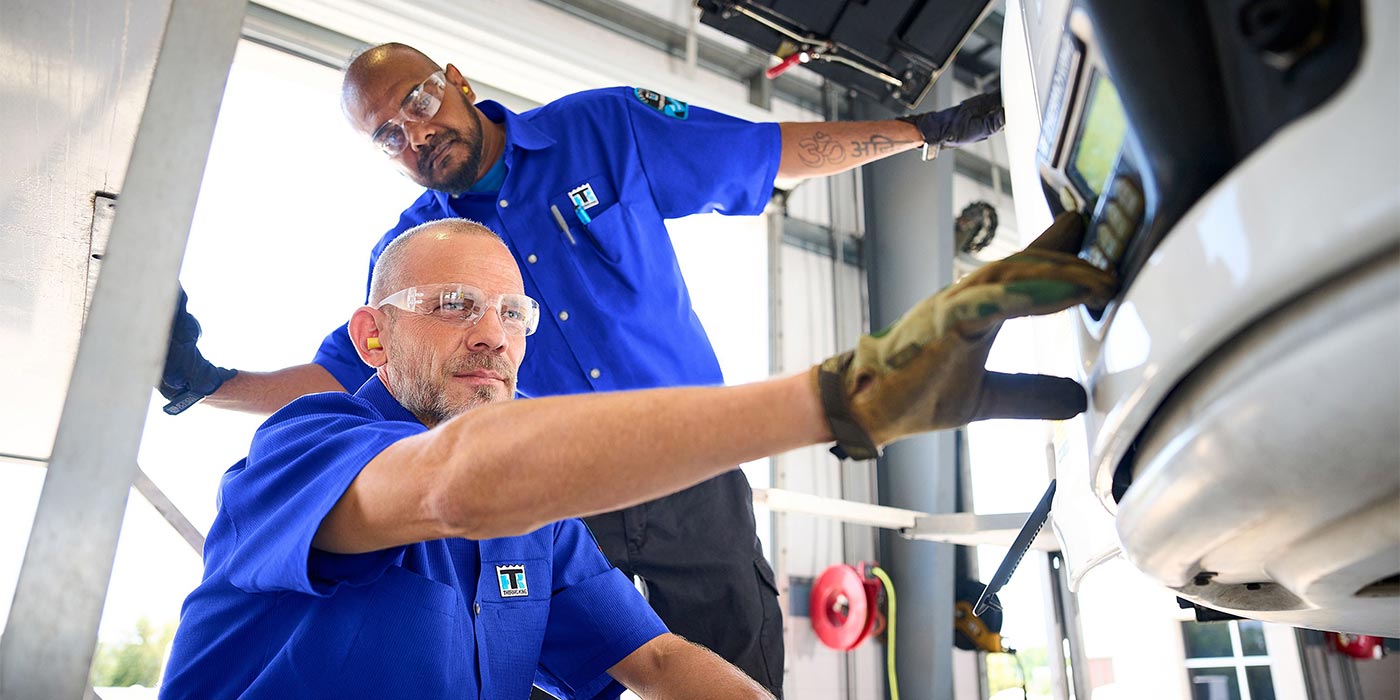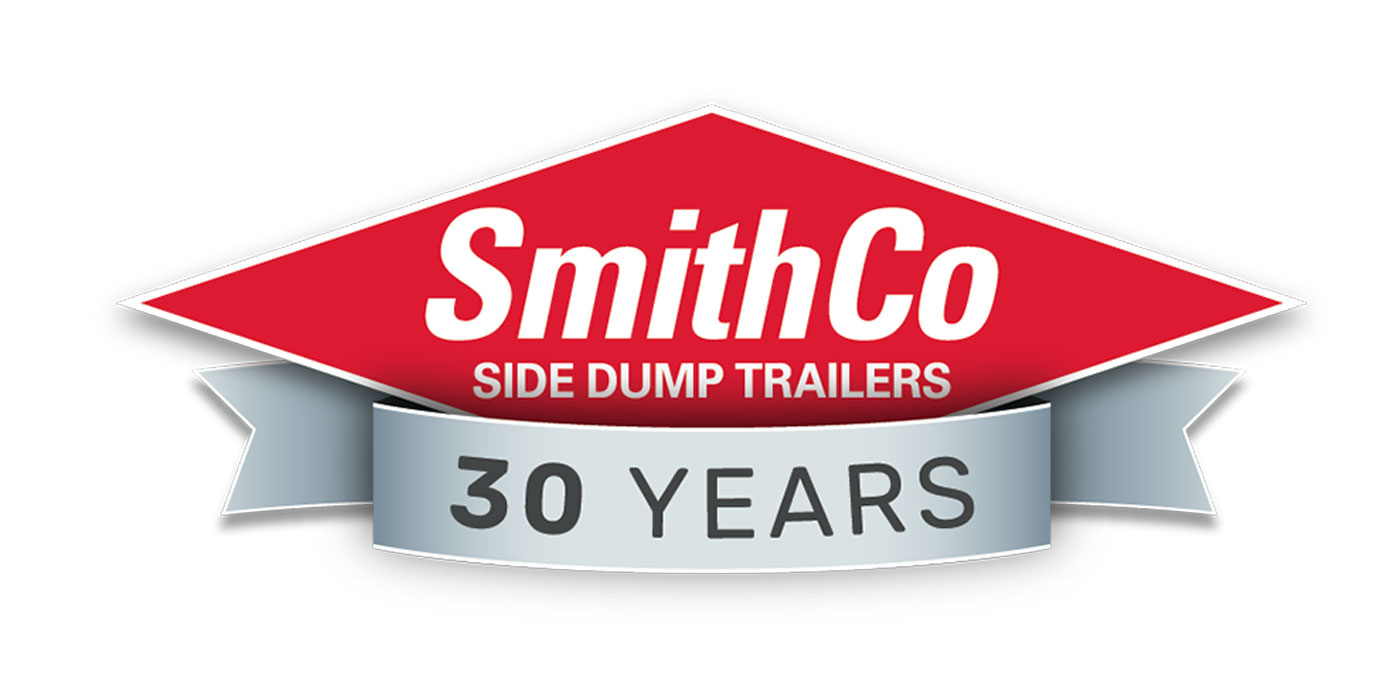“The addition of Airtabs to any vehicle has no downside and will not make a poor handling worse,” says Kent Smerdon, vice president of international marketing for Aeroserve. “Airtabs will not degrade the vehicle’s operation, safety or stability in wind or weather; they can only improve it. ”
In terms of the fuel savings of any one aerodynamic device, Smerdon says he would be wary of promises exceeding 10%. “Short of a drastic redesign of the entire tractor-trailer combination, including radical changes in the way loading and shipping is done (almost always from the rear), there is only so much aerodynamic improvement one can accomplish with an 18-wheeled, 80,000 lb. box that travels all day through air at 60 to 70 MPH,” he points out. “There is a limit. You can hide the stacks and breather and sculpt the mirrors all you like…it all helps, but it’s still a big truck that rolls on 18 big wheels.”
Trailer products
Stemco manufactures the TrailerTail family of products, which reduce aerodynamic drag and streamline airflow at the rear of the trailer, as well as EcoSkirt side fairings, which reduce aerodynamic drag on the bottom of the trailer where air hits the trailer’s rear axles.
The company says it gears the TrailerTail products toward reducing fuel consumption and providing safety benefits, including reduced side-to-side sway and improved visibility in the rearview mirror.
“Installing TrailerTail alone saves 5% of the vehicle’s fuel when traveling at highway speeds, which equates about 0.3 to 0.5 miles per gallon in real-world applications,” says Jeff Grossmann, engineering manager of aerodynamics for Stemco. “When fleets want to calculate their expected fuel savings per year with aero devices, they should always look at the total number of miles they drive at highway speeds, not their percentage of time spent at highway speeds, because engines burn substantially more fuel per minute at higher RPMs.”
Laydon Composites offers a total of seven Smartway EPA approved aerodynamic devices for trailers, consisting of various trailer skirt models and gap fairings.

“The gap fairings, when mounted on the nose of a 53 ft. trailer or two pup 28 ft. trailers, reduce the distance between the back of cab and front of trailer,” Acott explains. “In a cross wind, large amounts of turbulent air pass through this gap causing tremendous drag on the trailer. The gap fairing prevents air from passing through the gap.” Acott went on to say that all Laydon skirts are EPA certified at 5% minimum fuel, but that testing has shown up to 6.4% for just a skirt and 11.75% with skirts, gap fairings and wheel fairings. The gap fairings have consistently measured 1% fuel savings at both track and wind tunnel tests.
Fleet Engineers offers four different products in the aerodynamic field: AeroSaver, its fiberglass reinforced poly side skirt; AeroSaver Classic, its aluminum trailer side skirt; the AeroPan trailer belly panel, which helps increase fuel economy by reducing drag on the underside of the trailer while protecting the cross-members in the event of a tire blow out; and AeroSlipper Quarter Fenders, which help reduce drag by eliminating the full length tube typically located across the width of the fender.
Each of these devices adds between 1 and 6% fuel economy but, Gary Roberts, business development manager for Fleet Engineers warns that “a fleet manager can’t just add all these devices and expect to get 18% savings. They all work together to potentially give you half that savings.”
Barry Andersen is the president of Andersen Flaps, which makes the Eco-flaps splashguard that reduce drag and cut fuel consumption on both tractors and trailers, as he explains, “By reducing the heavy road spray in inclement weather, Eco-flaps effectively increase visibility, both for truck drivers and passing motorists. Eco-flaps also withstand the stress of high wind and side wind better. Within one month of fuel savings, Eco-flaps have been proven to pay for themselves.”
Wabash National offers five trailer aerodynamic devices: two side skirts, the DuraPlate AeroSkirt and the AeroSkirt CX; a side skirt alternative, the Ventix DRS (drag reduction system); and two tail devices, the AeroFin Tail Device and the AeroFin XL. These products can be used individually or combined for additional fuel savings.
“Stand-alone devices available on the market yield anywhere from 1% to 8.9% improvement in fuel economy,” says Wabash’s Fanelli. “With SmartWay Elite device combinations, however, a fleet can save 9% or more in fuel usage at highway speeds.”

